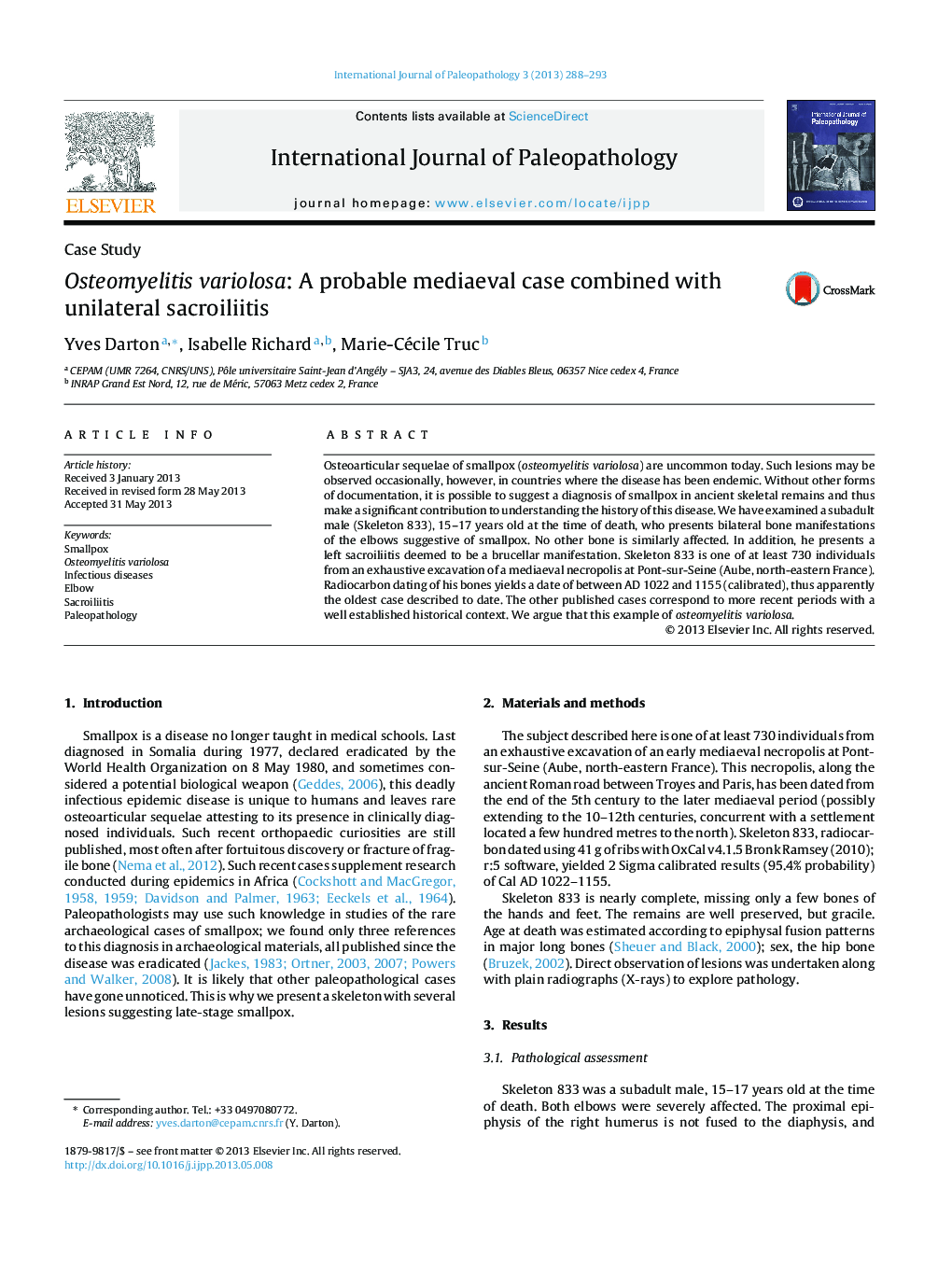| Article ID | Journal | Published Year | Pages | File Type |
|---|---|---|---|---|
| 101395 | International Journal of Paleopathology | 2013 | 6 Pages |
•Few osteoarticular sequelae of smallpox are described in paleopathological literature.•Our case represents a late stage of the disease affecting the elbows.•Well preserved bones supply osteologists with useful pathological data.•Our mediaeval case is the oldest known.•It holds great interest for paleoepidemiology.
Osteoarticular sequelae of smallpox (osteomyelitis variolosa) are uncommon today. Such lesions may be observed occasionally, however, in countries where the disease has been endemic. Without other forms of documentation, it is possible to suggest a diagnosis of smallpox in ancient skeletal remains and thus make a significant contribution to understanding the history of this disease. We have examined a subadult male (Skeleton 833), 15–17 years old at the time of death, who presents bilateral bone manifestations of the elbows suggestive of smallpox. No other bone is similarly affected. In addition, he presents a left sacroiliitis deemed to be a brucellar manifestation. Skeleton 833 is one of at least 730 individuals from an exhaustive excavation of a mediaeval necropolis at Pont-sur-Seine (Aube, north-eastern France). Radiocarbon dating of his bones yields a date of between AD 1022 and 1155 (calibrated), thus apparently the oldest case described to date. The other published cases correspond to more recent periods with a well established historical context. We argue that this example of osteomyelitis variolosa.
